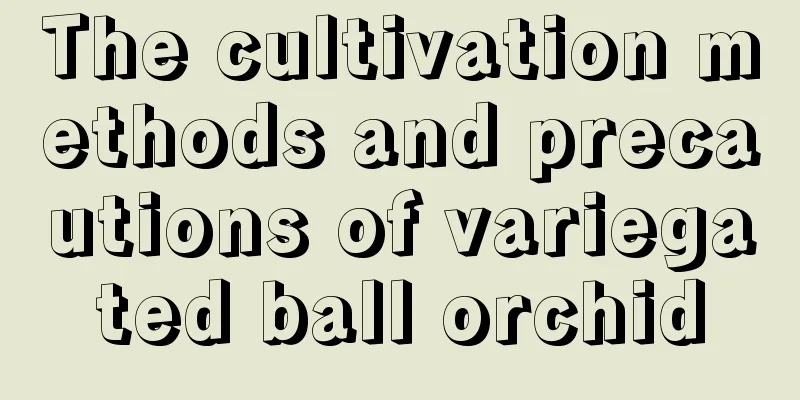The cultivation methods and precautions of variegated ball orchid

temperatureVariegated Hoya prefers high temperature environment and cannot tolerate severe cold. The most suitable temperature for its growth is about 18-24℃. It needs a temperature above 20℃ during the growth period. The temperature in winter should not be lower than 5℃, otherwise it will be frostbitten or cause the death of the plant. illuminationVariegated Hoya prefers a semi-shaded environment and does not like direct sunlight. Therefore, during the cultivation process, you must pay attention to proper shading and avoid exposing it to the sun. It is best to ensure three to five hours of sunlight every day, which can promote leaf growth and improve flowering quality. soilIt is best to use loose, fertile, well-drained sandy soil to cultivate variegated leaf hoya, as such soil is conducive to the growth of variegated leaf hoya. When planting in a pot, you can use ordinary garden soil and coarse sand to mix, and then add some humus-rich decomposed soil to mix thoroughly. You can also add an appropriate amount of bone meal during cultivation. MoistureThis flower likes a humid environment. During the period of vigorous growth, watering should be timely and sufficient to keep the soil and air moist. Be careful not to water directly with tap water. It is best to let the water sit in the sun for a while before using it, or water directly with purified water. In summer, you should spray water frequently, but be careful not to spray the flowers to prevent damage to the inflorescence and affect flowering. But at the same time, the flower can also tolerate drought, but be careful not to keep it too wet, otherwise it will cause root rot and affect its growth and flowering. fertilizerDuring the growing period of the variegated Hoya, attention should be paid to timely topdressing, mainly potassium fertilizer, about once every two weeks. Pest controlVariegated Hoya is susceptible to leaf spot and powdery mildew, which are especially common in hot and humid seasons. Attention should be paid to keeping the environment ventilated and the soil well drained for prevention. The most common pests are scale insects. When the disease occurs, you can spray pesticides during the hatching period of the scale insects, or you can manually remove the insects. Pay attention to disinfecting and sterilizing the soil at ordinary times to prevent and control pests and diseases. |
<<: How to cultivate perfume roses
>>: Hibiscus sunflower cultivation methods and precautions
Recommend
What to do if beans dry up
The phenomenon and causes of beans drying up If t...
How to prune calendula
Why should calendula be pruned? Generally, potted...
What difficulties are there in raising chickens in the mountains?
In recent years, local chickens and local eggs ha...
How to grow the fortune tree to make it more vigorous?
The fortune tree is a home plant that many people...
Golden marble grafting time
1. Grafting time Its grafting is usually carried ...
When and how to prune apricot trees
1. Pruning time Apricot trees grow vigorously and...
How to choose a pot for potted daisies
Principles of choosing pots for daisies When grow...
Reasons and solutions for the osmanthus tree not blooming
Sweet Osmanthus, also known as "laurel"...
Is the money tree suitable for a deep or shallow pot?
Is the money tree suitable for a deep or shallow ...
The correct way to fertilize watermelon
The quality and yield of watermelon are affected ...
How to grow Bilodi well? How to grow Bilodi the fastest?
Bilodia is very easy to grow. It can survive in w...
Potted jasmine in spring and pruning
Preparation for potted jasmine In winter, jasmine...
The efficacy and function of hawthorn
1. Cancer prevention and anti-cancer Studies have...
How to fertilize Fragrant Wood
Fertilization method The fragrant wood is a plant...
How to grow aloe vera (how to grow aloe vera quickly and make it big and fat)
How to cultivate aloe vera to grow well Aloe vera...









